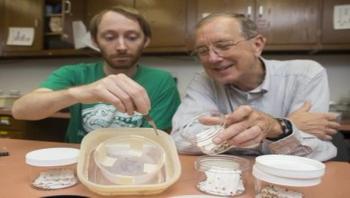
Kimberly-Clark Health Care recently crowned the champion of the inaugural Smart-Fold Wrap Races at the International Association of Healthcare Central Service Materiel Management (IAHCSMM) Annual Conference and Expo held in Columbus, Ohio. Naomi Campbell from Brandywine Hospital was declared the fastest sterilization wrapper, beating out central services (CS) professionals from across the United States and Canada. The timed, head-to-head wrapping competition spotlighted how Smart-Fold Sterilization Wrap enhances the skills of CS professionals by enabling them to wrap quickly and efficiently.



